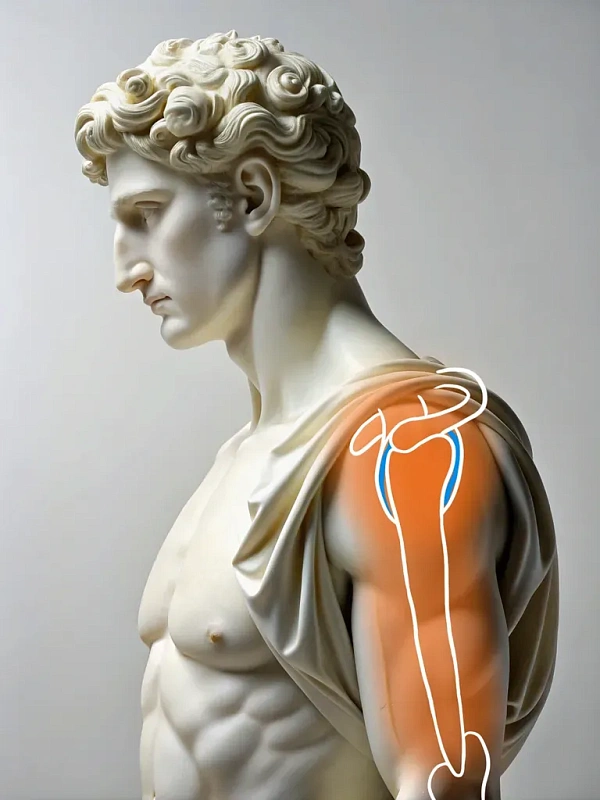Stress fractures
Stress fractures are microtrauma of the bones, which are usually caused by chronic overload. They are especially common in the femur, shin and feet, and are characterized by gradually increasing pain during exertion.

These fractures occur as a result of repeated exposure to a small force on the same area of the bone, which leads to microtrauma exceeding the ability of bone tissue to recover.
The main symptom of a stress fracture is pain, which increases with physical exertion and decreases at rest. Over time, the pain may become permanent and be accompanied by swelling and hypersensitivity in the fracture area. In the early stages, stress fractures are difficult to diagnose using radiography, so magnetic resonance imaging (MRI) or computed tomography (CT) is often required for accurate diagnosis. Treatment of stress fractures is primarily aimed at eliminating the load on the affected bone and creating conditions for natural healing. If the stress fracture progresses, surgery may be required.
A general blood and urine test. Coagulogram for the assessment of blood clotting. MRI or CT scan for accurate diagnosis and assessment of the fracture condition. Consultation with an anesthesiologist to choose the optimal method of anesthesia. Examination and consultation with a therapist for an overall assessment of the patient's health.
Usually, treatment begins with providing rest to the affected area. Patients are advised to temporarily stop exercising and reduce physical activity. painkillers and anti-inflammatory drugs are used. In some cases, orthopedic devices such as special insoles or plaster casts may be prescribed to stabilize and relieve the affected area. If conservative treatment does not bring results, surgical intervention may be required. The operation involves osteosynthesis — the fixation of bone using metal structures such as screws and plates to ensure stability and accelerate healing.
MRI or CT equipment for intraoperative monitoring. A set of metal clamps (screws, plates) to stabilize bone fragments.
After the symptoms decrease, the rehabilitation stage begins, which includes exercises to strengthen muscles and improve flexibility, as well as a gradual resumption of training under the supervision of a specialist. The rehabilitation program is individual and depends on the location of the fracture and the general health of the patient. It is also important to learn the correct training methods and adequate load distribution to prevent repeated injuries.
Benefits
Pain reduction
Elimination of discomfort and restoration of the ability to normal physical activity.
Restoration of bone integrity
Ensuring proper fusion of bone tissues and restoring their strength.
Prevention of relapses
Changing the training regime and adjusting the lifestyle to prevent repeated injuries.
Frequently Asked Questions
How long does stress fracture treatment last?
Can I exercise with a stress fracture?
What complications can occur with a stress fracture?
Is it possible to prevent stress fractures?
Didn't find an answer to your question?
You can describe your problem in detail and ask a question to the doctor. He will answer you and help you find a solution
Врачи
Смотреть всех врачейCandidate of Medical Sciences. Orthopedic Trauma Surgeon. Head of the Traumatology Department.
Similar referral activities
Arthroscopy of the ankle joint
Ankle arthroscopy is a minimally invasive surgical procedure used to diagnose and treat various diseases and injuries of the ankle joint.
Arthroscopy of the knee joint
Knee arthroscopy is a minimally invasive surgical procedure for the diagnosis and treatment of injuries and diseases of the knee joint. It allows examining the joint for damage and eliminating the identified defects.
Arthroscopy of the elbow joint
Arthroscopy of the elbow joint is a minimally invasive surgical intervention that allows for accurate diagnosis and simultaneous treatment of joint injuries.
Arthrodesis of the joints of the fingers of the hand
The destruction of the joints of the fingers of the hand is accompanied by pronounced pain and impaired functions. Arthrodesis is a surgical intervention in which the affected joint is completely immobilized, which relieves pain and progression of inflammation.
Arthroscopic revision of the cystic joint
The condition of the wrist joints determines the functioning of the hand. Arthroscopic revision is a minimally invasive diagnostic procedure that assesses the condition of the joint tissues, which is necessary for planning subsequent treatment.
Arthroscopy of the shoulder joint
Arthroscopy of the shoulder joint is a minimally invasive surgical procedure designed to diagnose and treat various diseases and injuries of the shoulder joint.
